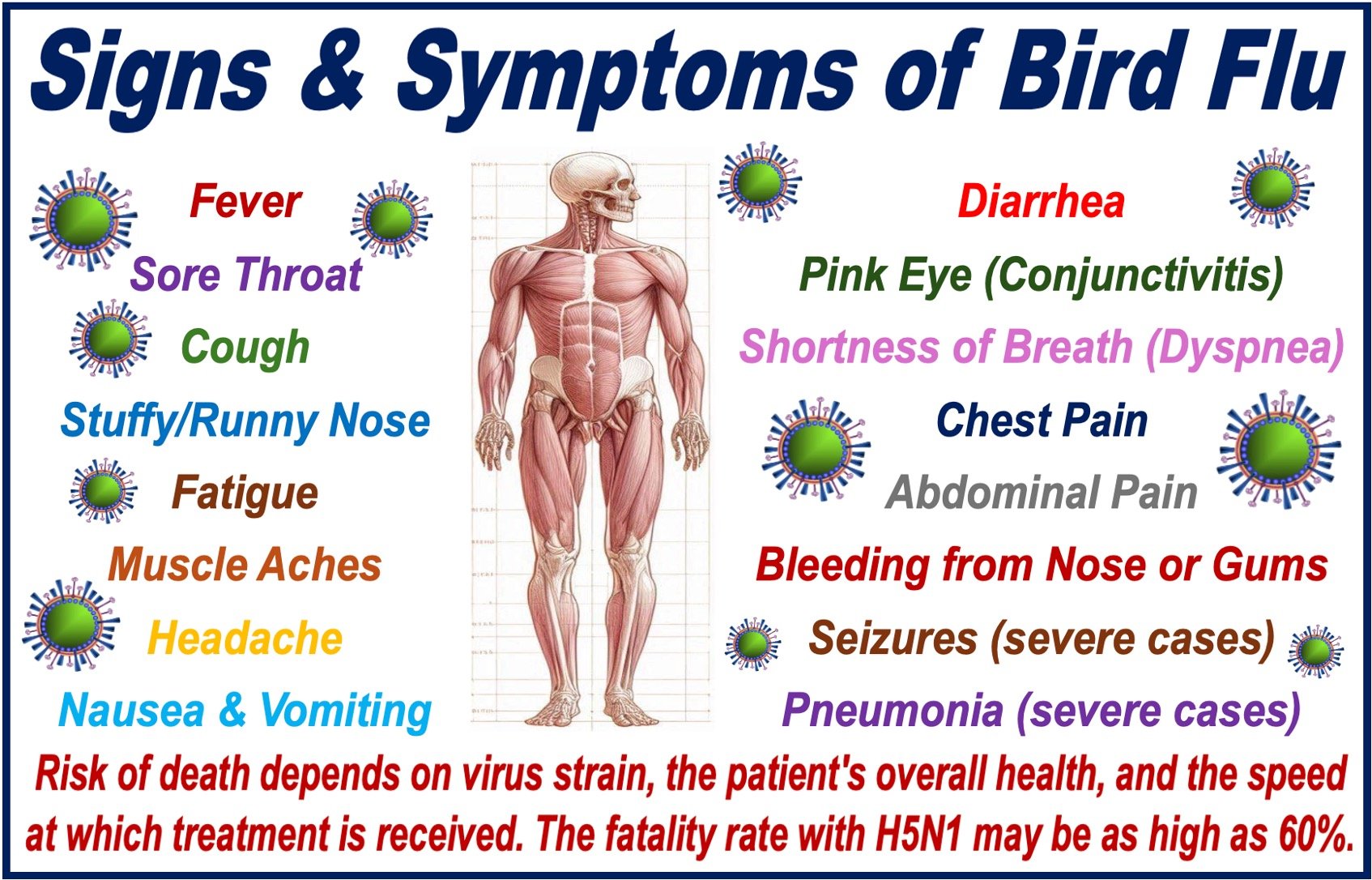Egg prices have surged once again, causing concern for consumers, particularly in the wake of inflation that has impacted various grocery items.
According to the US Bureau of Labor Statistics (BLS), egg prices spiked by over 28% in August compared to the previous year, making them the fastest-growing food item in the U.S.
This rise, however, is part of a larger trend, driven primarily by avian influenza, commonly known as bird flu, which has disrupted the egg supply across the country.
What is Bird Flu?
Bird flu, or avian influenza, is a virus that primarily infects birds, but in rare cases, it can also spread to humans.
There are different strains of bird flu, but the most concerning one is called H5N1. This strain is highly contagious among birds, especially those that live in crowded spaces like chicken farms.
When one bird catches the virus, it can spread rapidly, often leading to the entire flock being killed to prevent further infection.

Bird flu can be deadly for birds, affecting their ability to lay eggs and causing large-scale losses in poultry farms. This reduction in the number of egg-laying birds is a major reason why egg prices are rising.
Bird flu does not often infect people, but it can happen through close contact with sick birds. Governments and health organizations closely monitor bird flu outbreaks to prevent them from spreading further.
Bird Flu: The Main Culprit Behind the Spike
Bird flu is a major factor in the latest spike in egg prices. Since January 2022, HPAI (highly pathogenic avian influenza) has affected (either directly or indirectly) over 100 million birds across 48 US states.
Bird flu spreads rapidly among birds housed in close quarters. When one bird becomes infected, entire flocks are often culled to prevent the virus from spreading further, which reduces egg production.
According to CNN, Phil Lempert, a grocery industry analyst, emphasized the direct connection between bird flu outbreaks and higher egg prices.
“Bird flu is the number one reason for higher prices, absolutely,” Lempert noted.
The U.S. Department of Agriculture (USDA) reported a 2.6% decline in egg production in July, while the number of egg-laying birds has also decreased for two consecutive months.
How Egg Prices Vary Across the Country
Egg prices are now higher than ever before the pandemic, with the national average for a dozen eggs currently standing at $3.20, according to the BLS. Pre-pandemic, eggs rarely crossed the $3 mark.
Shoppers in some US states are feeling the pressure more than others. In states like Minnesota, Missouri, Iowa, Oklahoma, and Alabama, egg prices have more than doubled compared to before COVID-19.
Despite this, some relief might be on the horizon. According to Brian Moscogiuri, vice president of Eggs Unlimited, wholesale egg prices have begun to drop, which could eventually lead to lower prices for consumers.
However, this will depend on the continued mitigation of bird flu outbreaks. If these outbreaks persist, prices could remain high into the fall and holiday season.
Industry Consolidation: An Additional Factor
Another factor contributing to the high egg prices is industry consolidation. As of 2020, five large companies controlled up to 40% of all egg-laying hens in the U.S.
This consolidation can exacerbate price hikes when supply disruptions, like the bird flu, occur.
Cal-Maine Foods, the largest egg producer in the U.S., reported a 718% surge in profits when egg prices peaked in early 2023.
Critics argue that this consolidation has made the industry less resilient to supply shocks, keeping prices high even when demand stabilizes.
Farm Action, an advocacy group, accused dominant egg producers of taking advantage of inflation and avian flu to inflate profit margins.
Impact on Low-Income Consumers
Rising egg prices disproportionately affect low-income families, who often rely on eggs as an affordable source of protein.
Consumers who are part of food assistance programs, such as the Supplemental Nutrition Assistance Program (SNAP), have been particularly hard hit by these price increases. “Going from $2 per dozen eggs to $4 or $5 is a big jump on a tight budget,” Lempert warned.
Despite the current high prices, eggs remain an essential part of the American diet due to their affordability relative to other protein sources and their high nutritional value.
Experts recommend purchasing eggs in bulk or sourcing them locally to save on costs.
Making Eggs Last Longer
Consumers can maximize the value of their egg purchases by using various preservation techniques.
Freezing eggs is one effective method; we must, however, remove the eggs their shells and scramble them before freezing. Eggs can last up to a year if we store them in freezer containers.
Other preservation methods include pickling, dehydrating, and storing hard-boiled eggs in oil.
For those who primarily use egg whites in cooking, experts advise finding creative ways to use the yolks rather than discarding them. We can use yolks in sauces, baked goods, and even ice cream.
By utilizing both parts of the egg, consumers can reduce waste and stretch their grocery budgets further.
The Future of Egg Prices
As bird flu outbreaks continue, experts like Kevin Bergquist from the Wells Fargo Agri-Food Institute warn that prices could rise further in the coming months, particularly during the holiday season.
However, if the industry can get through the next 6 to 8 months without a major outbreak, wholesale prices should stabilize, providing relief for consumers.
In the meantime, shoppers may need to be strategic in their egg consumption, exploring alternative methods to extend their shelf life and finding budget-friendly ways to incorporate this essential food item into their diets.

